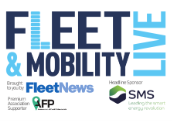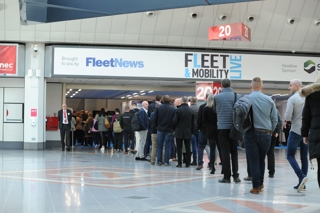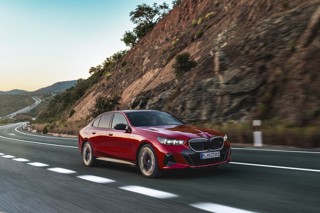SMS, the smart energy infrastructure group, has said fleets planning their strategies for future charging solutions will benefit from the key learnings from the telecoms industry.
The business, which is the headline sponsor for this year’s Fleet & Mobility Live on October 3 & 4 at the NEC, said there are many parallels between the work to upgrade the UK’s infrastructure for 5G communication masts and putting in larger scale charging facilities for larger fleets and electric commercial vehicle depots.
 Mark Winn (pictured), SMS head of EV strategy, told Fleet News: “5G masts are typically going into new locations and so the big challenges are finding the right place for them to go and figuring out where the power is coming from.
Mark Winn (pictured), SMS head of EV strategy, told Fleet News: “5G masts are typically going into new locations and so the big challenges are finding the right place for them to go and figuring out where the power is coming from.
“It’s the same challenge fleets are looking at when planning for the future with their charging infrastructure.”
SMS entered the fleet sector 18 months ago but has been working in the energy infrastructure space for nearly 30 years across telecoms, retail, rail, utilities and manufacturing sectors.
The company has built up a customer base of fleets that represent a total of 5,000 electric vehicles across the UK and is focussing on building growth to 20,000 vehicles in scope in the next two to three years.
Winn and the SMS team will be on hand at stand D2 at Fleet & Mobility Live to help advise any fleets that are looking to plan for the future with their home, depot, workplace or public charging strategies.
It’s something Winn said fleets need more specialised support with.
He said: “Many fleets are often well versed when it comes to the vehicles, but when it comes to charging, energy and infrastructure, they’re often less certain on where to turn to when it comes to software, hardware, large scale installations, energy trade and supply.
“We’re working with a number of fleets, both small and large, to look at different infrastructure challenges across their fleets, cars, vans, workplaces and depots.
“It’s not just a vehicle charging challenge, it’s also about buildings. It’s an infrastructure challenge for all, particularly if EVs are offered through salary sacrifice and not all employees have access to off-street parking to charge at home.
“If we’re enabling people to transition into EVs with traditional fleet vehicles and through salary sacrifice, it needs to be socially equitable.
“That’s another element we’re passionate about working on and solving too.”
Solutions to charging infrastructure challenges
SMS has been working with local authorities and fleets to offer workplace charging to the public when those charge points aren’t in use by the fleet owners.
It is also working on an initiative that will put fleets in direct control of fleet drivers’ home chargers and the energy tariffs they’re linked with.
Winn said: “We’ve been trialling infrastructure technology that separates the charging from the domestic energy tariff, giving more control and future opportunities to fleets.
“It means fleets can control where that energy supply is coming from, as well as the cost and how green it is.
“Fleets that have drivers charging at home right now may have 50 different home energy tariffs and with different levels of renewables being used.
“I think as we get to a bigger number of EV drivers this headache around reimbursement and energy is going to be a big problem for fleets.”
While Winn said there are still some “consistency and regulation elements” that need to be finalised before the initiative can be rolled out further, it would mean the cost of charging for drivers could be standardised across an entire fleet of vehicles.
Fleets that oversee the home chargers and energy tariffs could also then start to monetise those assets through vehicle-to-grid technology, or through peer-to-peer home charger sharing.
Where to start with EV charging infrastructure?
Winn added: “Fundamentally fleets should be asking questions and engaging with the supply chains in the market.
“The beauty for me about Fleet & Mobility Live is that you have so many stakeholders there all in the same place.
“Transitioning vehicles to electric is a huge task for the fleet industry but the good news is that rolling out a cost-effective, efficient and, most importantly, accessible EV charging infrastructure plan does not need to be a complicated journey.
“It’s all about keeping the three ‘Rs’ front of mind - right time, right location, and right speed.”
- For more information about Fleet & Mobility Live, including all the details on the sessions available on the day visit: www.fleetandmobilitylive.com






















Login to comment
Comments
No comments have been made yet.